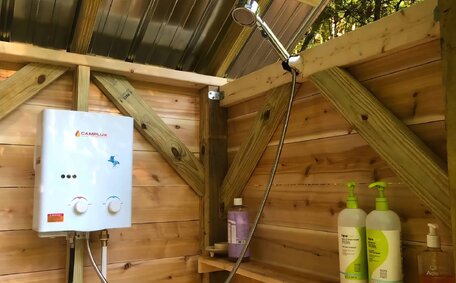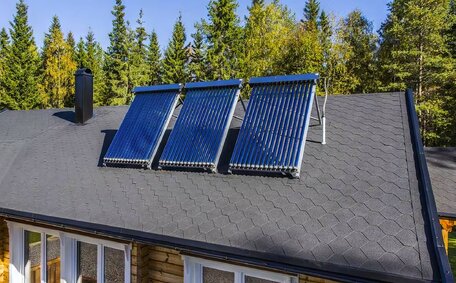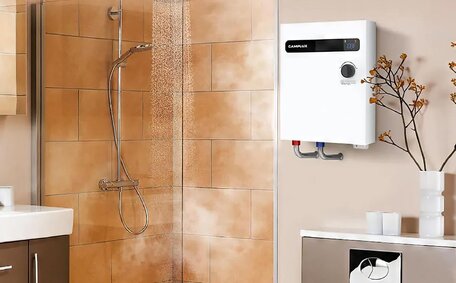Introduction to Pipe Relining
Trenchless pipe relining is a minimally invasive technique to restore ageing plumbing systems, involving the insertion of an epoxy resin lining into existing pipes, which then hardens to form a seamless pipe within a pipe.
This seals cracks and stops leaks, reducing the need to dig up landscaping and structures to access underground plumbing.
At Cranebrook Plumbing, our experienced team excels in pipe relining, providing superior plumbing services tailored to contemporary needs. Serving Cranebrook and the greater Sydney area, we are adept at trenchless pipe repair and drain repair, able to assess your unique needs to determine if relining is suitable for your home or business. Compared to tearing up floors and walls for full pipe replacement, pipe relining allows us to save you time, money and unnecessary disruption while revitalising your plumbing for the long-term.
Dial our number today to chat about the pipe repair options we offer and discover how they can work to your advantage.
What Causes Leaks in Pipes?
Several common causes contribute to leaks in pipes:
Corrosion
Understanding pipe relining assists homeowners in managing the corrosion susceptibilities of metal plumbing systems, as chemicals in water and soil may accelerate erosion, compromising pipe integrity.
Age and Wear
Old pipes that have been in use for decades can simply wear out. Years of water flow, pressure changes, ground shifting, and temperature swings can take their toll on pipes, which can suffer from wear and degradation over time.
Tree Roots
Tree roots, notorious for causing blocked drains, can penetrate tiny cracks in sewer pipes in search of water, eventually causing ruptures that may be addressed with relining.
Ground Movement
Shifting earth, from unstable soil to heavy traffic above, can bend and warp pipes, straining joints and leading to fractures due to the relentless stress.
Improper Installation
A leaking pipe can develop in your drain system if compromised due to improper installation, underscoring the importance of meticulous installation practices. This encompasses problems such as poorly soldered joints, misalignment, and significant gaps between pipes and fittings.
Left unaddressed, leaks damage your pipes only worsen over time, highlighting the importance of timely pipe repair. Neglecting to address the issue carries the risk of significant property damage through water damage, mould, and erosion, so timely intervention is key to ensure you won’t have to confront these challenges again. If you suspect a leak in your leaking pipes, having a professional plumber inspect and seal your pipes is urgently advised before major problems arise.
Pipe relining efficiently seals leaks and rejuvenates damaged pipes through a trenchless method. It entails inserting a resin-soaked liner into the pipe and using heat or UV light to harden the resin, creating a seamless internal surface.
When it comes to evaluating pipe health, our team takes a comprehensive approach beginning with a meticulous cctv drain camera inspection to identify leaks, cracks, or blockages.
Utilising precise measuring tools, we carefully ascertain the pipe size, then attentively slice a felt liner to the exact dimensions required for the specific pipe repair. The felt tube, once impregnated with epoxy resin, is adeptly inserted into the pipe, prepped for the relining process. As we use the latest technology, the resin coats the inside pipe, it fills cracks and holes to prevent leaks.
Depending on access, we cure the resin with hot water, steam, or UV light to form the new pipe lining. As it hardens, the resin is used to bond to the pipe itself, effectively creating a new, leak-free pipe within the old damaged infrastructure. The curing process usually takes 2-3 hours to complete.
Relined pipes regain structural integrity and protection against leaks, addressing issues from corrosion to root infiltration, avoiding the extensive costs and disruption of full pipe replacement.
The epoxy barrier applied in relining acts as a durable defence against corrosion, potentially prolonging the pipe’s lifespan by 50 years or more.
Opting for pipe relining as opposed to more disruptive methods like digging trenches means floors and walls remain undisturbed, sparing you from extensive renovations. It causes minimal disruption your home or business compared to traditional pipe repair methods. Our expert plumbers have the capability to effectively reline a pipe without the invasive procedure of dismantling parts of your kitchen or bathroom.
The Pipe Relining Process Step-by-Step
1. Initial Camera Inspection
Embarking on the task, our first move is to perform a drain camera inspection, feeding a device into your plumbing to visually identify problems, a technique far less invasive than traditional methods. This thorough inspection allows us to assess the situation when it comes to the environment around your property and determine if relining is suitable.
2. Measurement and Liner Selection
Precise measurements of the pipe inform the specification of the liner to be used, ensuring a perfect fit.
3. Liner Preparation
We cut the felt liner to the size of your pipe and saturate it with special epoxy resin. The liner is then ready for installation, prepared with the dedication and precision we use in every task.
4. Liner Installation
Depending on the location in your house, we offer solutions where we either pull or invert the liner into your pipe. As we use the latest methods, the epoxy resin coats the pipe wall, fills cracks and leaves customers very happy with leak-free results.
5. Curing the Liner
The resin hardens and effectively melds into a seamless, jointless new pipe lining, much to the relief of homeowners who watched their day’s stress dissipate as the perfect solution come out just as intended.
6. Inspection and Finishing
A final camera inspection checks the lined pipe’s integrity. We reopen connections and access points, allowing full plumbing functionality.
7. Cleanup
All equipment and materials are removed, and your property is meticulously cleaned up after and restored to its original condition once the relining is complete.
- Cost Savings - Pipe relining is a cost-effective solution at approximately $130 per metre, compared to the average pipe replacement cost of $400 per metre. Relining circumvents the high expenses and potential disruption to your daily routine that come with total pipe replacement.
- Minimal Disruption - Accessing pipes in walls and under floors often involves invasive work. With relining, repairing pipes without digging up the landscape is possible, ensuring tranquillity remains undisturbed.
- Speed - The average relining project takes just one day, while pipe replacement can take 3-5 days.
- Longevity - With total pipe protection in mind, the epoxy liner is highly durable, possessing a 50+ year design life that outlasts many replacement options.
- Reduced Waste - Relining preserves pipes, avoiding landfill waste from removed pipes.
- Versatility - Pipe relining is a versatile pipe repair method, ensuring that we can seal a pipe even in confined spaces and areas difficult to reach where replacement isn’t an option.
With a team experienced in applying advanced techniques, pipe relining seals leaks without upheaval to walls or floors. The seamless epoxy barrier is resistant to future corrosion and cracks for long-lasting leak protection.
Cons of Pipe Relining vs. Full Replacement
- Relining cannot repair severely damaged pipes - If the existing pipe is too deteriorated, collapsed or offset, replacement may be required.
- Slight flow reduction - The liner slightly reduces flow capacity by occupying space within the pipe.
- Access limitations - Extremely tight bends or connections may block liner insertion, necessitating pipe replacement.
- Intermittent water service disruption - The water supply is turned off briefly during certain stages of the relining process.
- Liner lifespan consideration - Despite their 50-80 year durability, liners do not match the potential century-long lifespan of new pipe systems.
Our licensed plumbers are commended for their expert diagnosis and meticulous inspections. Given the right conditions, relining can restore a system for decades; otherwise, we offer professional recommendations and conduct necessary replacements.
Relining cannot repair severely damaged pipes - If the existing pipe is too deteriorated, collapsed or offset, replacement may be required.Slight flow reduction - The liner slightly reduces flow capacity by occupying space within the pipe.Access limitations - Extremely tight bends or connections may block liner insertion, necessitating pipe replacement.Intermittent water service disruption - The water supply is turned off briefly during certain stages of the relining process.There are several signs that suggest your pipes may need relining:
Frequent Clogs and Blockages
If you experience recurring clogged drains or sewer line backups, it often means pipe interiors have buildups or root intrusions that need sealing.
Leaking Pipes
Consistent drips or leaks from pipes usually indicate cracks, holes and corrosion that require repair. This allows water damage or sewage contamination if neglected.
Reduced Water Flow
Diminished water pressure and flow can indicate pipes cracked or narrowed by rust and debris, which relining can restore to full flow capacity.
Musty Odours
Sewer gas smells indoors typically mean cracks or gaps are allowing gases to escape pipes. Proper sealing contains odours.
Visible Pipe Damage
If you can see visible corrosion, cracks, bulges or separation in pipe joints, relining provides a long-term seal against further deterioration.
At the initial hint of an issue, reach out to our professionals for an inspection that can swiftly fix a broken pipe. We determine if relining can help fix broken plumbing vs. pipe replacement if damage is too severe.
Signs That Indicate Pipe Relining is Needed
There are several signs that suggest your pipes may need relining:
If you experience recurring clogged drains or sewer line backups, it often means pipe interiors have buildups or root intrusionsaks From Occurring
An ounce of prevention is worth a pound of cure when it comes to avoiding costly piph proactive maintenance.
An annual plumbing review can prevent minor leaks from escalating. Our technicians thoroughly inspect water systems, listening for drips and testing flow, sealing any small cracks or worn seals discovered.
Replacing corroded or outdated pipes, particularly those older than 50 years, with modern alternatives like copper or PEX can greatly mitigate future leak risks.
Proper insulation for pipes prevents winter freezing and potential cracking. Ensuring vents permit humidity escape helps avoid moisture damage.
Avoid pouring fats or harsh chemicals down drains. Only flush toilet paper - wipes and other unflushables can clog and strain pipes. Make it routine to purge your drains of hair and soap accumulations, ensuring they remain unobstructed.
Trim any trees or bushes near exterior plumbing to prevent root encroachment. There’s no ignoring the fact that roots can infiltrate tiny cracks and expand, causing pipe ruptures.
Addressing minor leaks promptly can prevent extensive damage and simplify repairs, compared to major pipe replacements later. Contact our experts for efficient repairs at the first sign of plumbing issues.
When to Call a Professional Plumber for Leaks
When signs of a leak become apparent, contacting our skilled team ensures urgent and accurate repairs. Our licensed plumbers have the expertise to identify the source and seal leaks durably.
Our expert service provides thorough repairs that prevent the escalation of leaks, in contrast to potentially insufficient DIY patching.
Conclusion
Pipe relining provides a highly effective method for sealing leaks and restoring ageing or damaged plumbing systems. As detailed throughout this article, it offers major benefits compared to traditional pipe replacement, including minimised disruption to property, reduced costs, and long-term leak protection lasting 50+ years.
We hope this breakdown has helped homeowners understand what pipe relining entails, when it should be considered, and how Cranebrook Plumbing can provide professional relining services for superior results.
Address small drips before they become major leaks - reach out to us for an inspection or to discuss your pipe relining options today.
For expert plumbing solutions, including leak detection and trenchless pipe repair, reach out to Cranebrook Plumbing at 1300 349 338 or [email protected].
Serving Cranebrook and the Sydney area, we use pipe relining techniques to enhance the plumbing infrastructure for both residential and commercial clients. Contact our master plumbers to restore your plumbing’s integrity.
Pipe relining provides a highly effective method for sealing leaks and restoring ageing or damaged plumbing systems.






